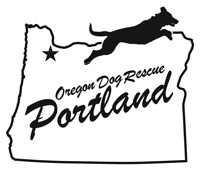Complete Guide to Designing,
Our new customer onboarding program (the best in the industry, by far) includes instruction and a catalog of assets to help our customers successfully go to market quickly. We created this helpful guide as an addendum to our onboarding program, as well as a primer to brands and businesses in the pre-roll game that aren’t our customers. Yet.
A lot of what it takes to successfully market and sell pre-rolls is the same as successful marketing and sales of any product. However, there are marketing nuances, tips, tricks, and considerations that are unique to the pre-roll category. That’s what we’ll focus on in this guide.
Table of Contents
Identify Your Target Consumer Audience
It’s crucial you know who your brand’s target audience is if you want to reach profitability. People from every demographic smoke weed. Your grandmother consumes weed for entirely different goals and reasons than your 20-something-year-old nephew. And you probably consume weed for entirely different goals and reasons than both of them.
Knowing who your brand speaks to, and better yet, who a specific product under your brand speaks to, will determine how you design your pre-roll(s).
To better understand what we mean, consider these questions:
- Is your target consumer newer to smoking and/or cannabis in general? Narrowing down the experience level of your consumer can influence whether you create an infused pre-roll or one using only flower.
- Does your target consumer prioritize eco-conscious purchases? The paper you choose for your pre-roll, as well as using a crutch or tip, could make or break your sale to them. Not all pre-rolls are created equal when it comes to environmental impact.
- Does your target consumer hang in local artsy circles? If so, it could be worth exploring a collab with local artists on limited-release packaging. It could also be worth releasing a pre-roll that imparts creativity-boosting effects.
Forget about what appeals to you as a consumer (if you are one), and use research and data to look for consumer segments that are underserved in your market. If most of the existing pre-roll brands are trying to compete for the high-end, “cannaseur” persona, don’t jump into that mix just because you may be one yourself. Maybe the move is budget-friendly and accessible. Maybe it’s soccer moms. Maybe its active seniors. Know who you’re going to serve, and why, before moving forward.
With your well-defined target audience in mind, you can start designing your custom pre-roll.
Design Your Pre-Roll
We’ve divided pre-roll design into six categories:
- Stuffed cone vs rolled pre-roll
- Flower and concentrate choice
- Size of pre-roll
- Paper type
- Crutch and tip
- Packaging
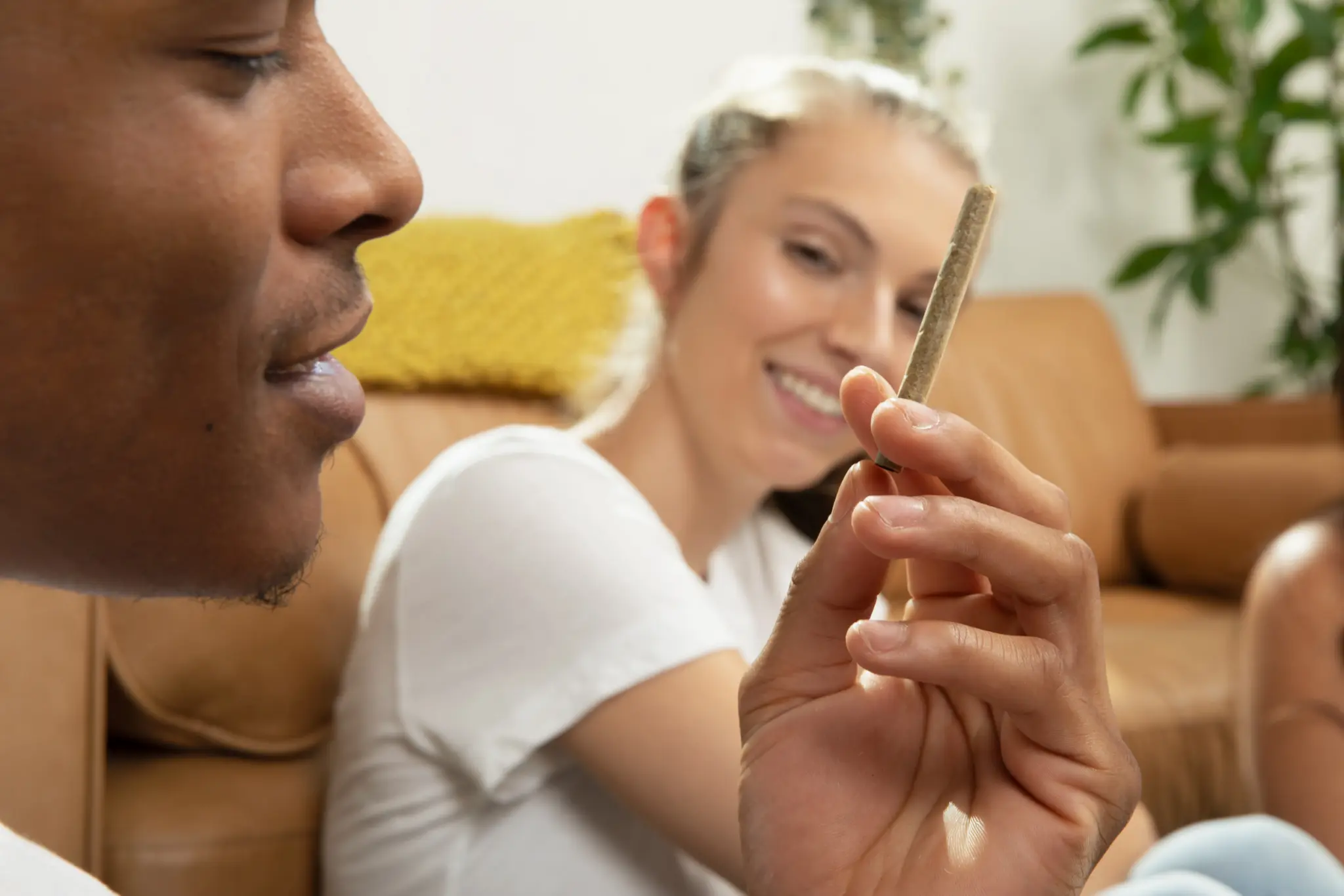
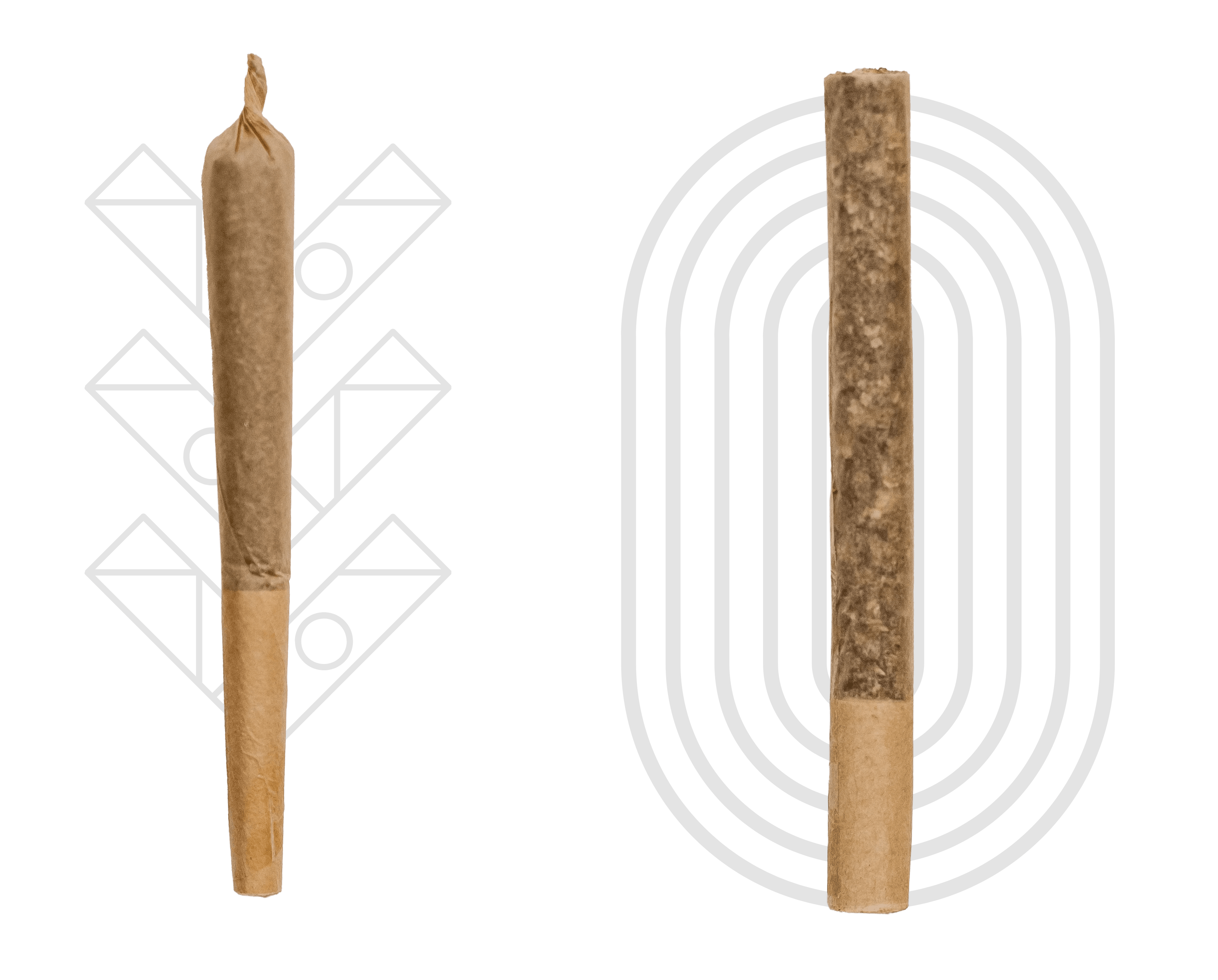
Stuffed Cones vs Rolled Joints
Many pre-rolls on the market are cones mechanically stuffed by pre-roll stuffing machines. These are the ones that burn hot and canoe like crazy. They require dry AF flower (hence the hot burn), and they greatly increase your brand’s carbon footprint. Still, this shape remains common in the industry. Choosing this shape will impact your next choice—the type of flower you use—since you’ll need flower that can still get the job done even after being dried to the point of only 6-8% moisture.
Rolled pre-rolls, on the other hand, are the classic joint we all know and love. They used to be out of reach for most brands as they required a large staff to physically hand roll each one. Now, brands have access to the BlackBird, the industry’s first and only automatic pre-roll machine that rolls pre-rolls. This machine rolls an average of 750 pre-rolls/hour. It requires fluffy flower with a moisture content of at least 10%, offering a much more pleasant and effective burn. And because the pre-roll it produces is rolled, not stuffed, there’s no need to worry about canoeing.
Click here to learn more about the BlackBird and request a demo.
Flower Choice and Concentrate Infusion
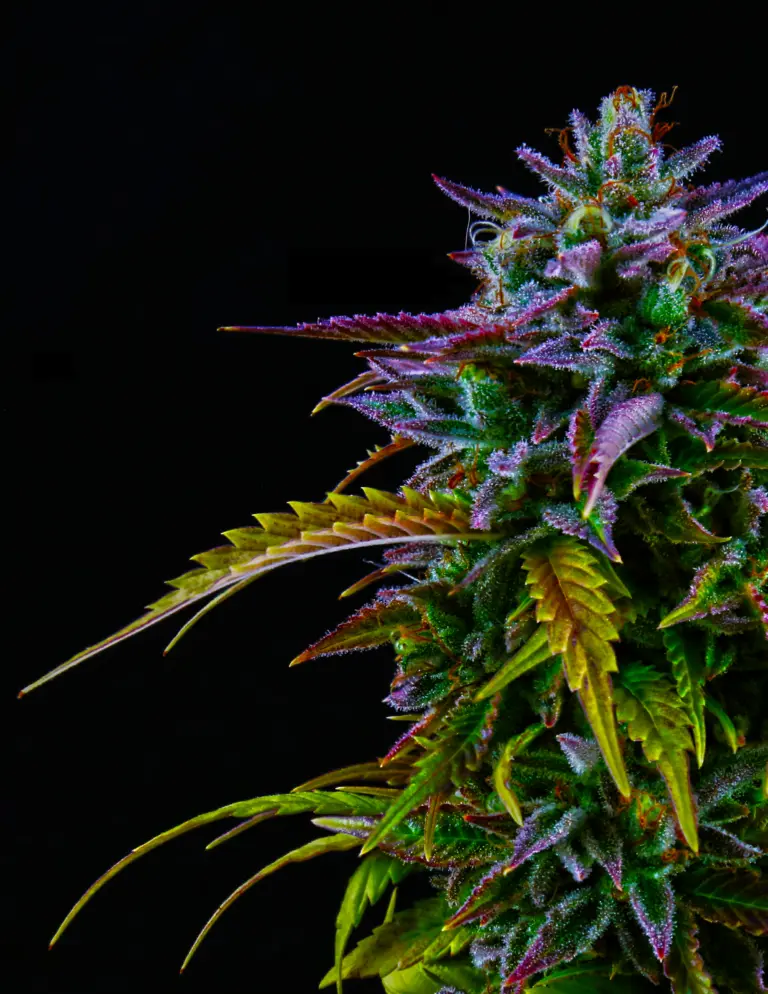
Flower
- Did you just drop a new strain and want to create some buzz around it? A pre-roll could do the trick; it’s an easy entry point for consumers that doesn’t require them to drop a lot of dough upfront.
- Did you over-produce a certain strain and need to move it? A limited-edition pre-roll is a more lucrative place to use it than sending the flower off for extraction or leaving it to age and degrade on the shelf.
- Been working with your retailers’ budtenders to see what effects the area’s consumers are looking for these days? Use this intel to create a pre-roll that gives the people what they want. (Side note: Budtenders are your brand’s greatest asset. We’ll touch on budtenders in part three of this series.)
Consider what your brand needs out of a pre-roll and what your consumers need. If you can serve both simultaneously, you’re on the track to profitability.
Remember: If you’re using stuffed cones, choose a strain that won’t completely lose its integrity after being dried to 6-8% moisture.

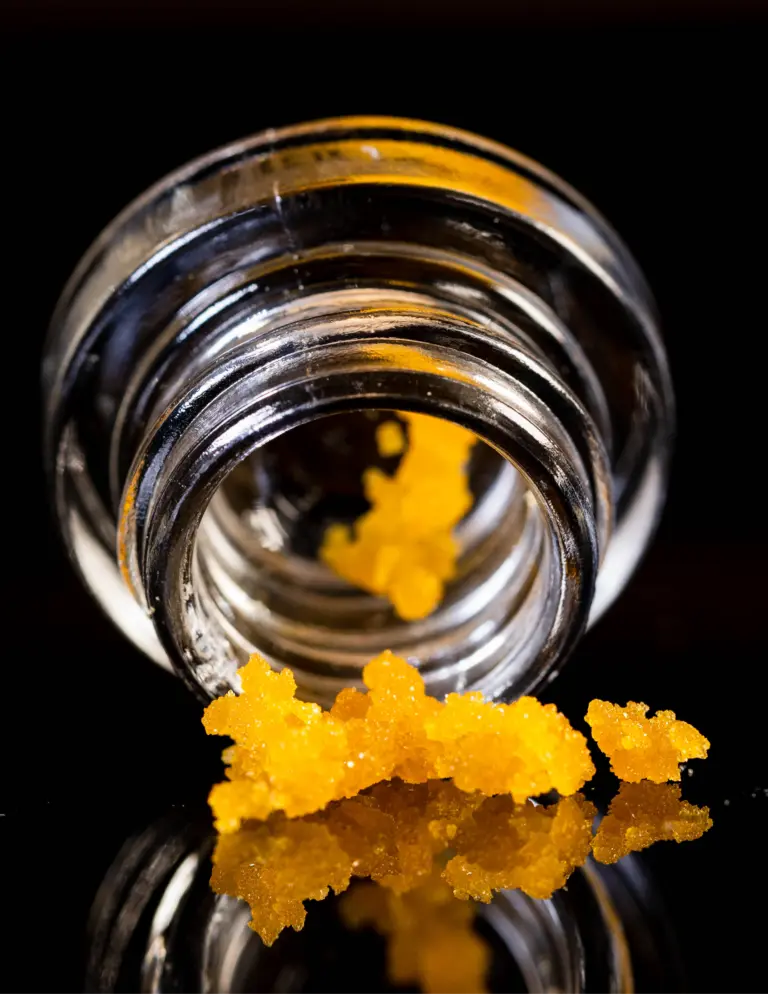
To Infuse or Not Infuse
If your target audience is experienced with cannabis, consider adding an infused pre-roll to your lineup.
You can use the budtender intel we mentioned earlier to narrow down what type of concentrate to use. Ask your retailers’ budtenders what types of concentrates customers are most interested in, and what infused pre-rolls are selling well to inform your decision.
Keep in mind, you’re not limited to your brand’s concentrates. If you have a concentrate in your product lineup that pairs well with the flower you’ve chosen and speaks to your goals and target audience, party on. If you don’t, consider using sales data and budtender insight to create a marketing opportunity through brand collaboration.
Take a look at the concentrate brands in your area with the highest sales. (Or, simply ask your retailers’ budtenders what’s selling.) Get in touch with those brands to see about a potential collab. This will get their brand in front of your loyal consumers and your brand in front of theirs. Advertise the collab as a limited release to increase the sense of urgency for the consumer.
Determine the Size of Your Pre-Roll
.35 to .5 grams is the “dog walker” size that’s become popular as pre-rolls have gained traction in the marketplace. They’re smaller, but that doesn’t mean they can’t hit hard. If you’re creating an infused pre-roll, maybe a dog walker is the right size for your brand since the concentrate will add to the product’s overall THC content. In most markets, smaller-size multipacks are at the top of the sales leaderboard.
The larger you go in size, the more it’ll cost you to produce, but the more you can charge for the product. Consider your target audience, your brand’s goal(s) for the pre-roll, and the type of flower and concentrate you may be using before narrowing down the right size for your pre-roll.
Note: Novelty products can be great for 4/20 events, but a 3-gram cross joint is only going to take your brand so far. If you’re developing a pre-roll you intend to keep as a standard in your product lineup, we suggest focusing on a more traditional size and shape.

Pick the Right Paper
- Hemp paper
- Natural unbleached paper / wood pulp
- Rice paper
If your target audience errs on the side of all-natural, sustainable, insert-eco-friendly-buzzword-here-type products, hemp paper is your move. It not only keeps your product more natural by wrapping cannabis flower in more cannabis, but it also adds to an eco-friendly narrative. No trees are destroyed in the creation of hemp paper, unlike natural unbleached paper and rice paper.
Natural unbleached paper and rice paper are the traditional pre-roll papers you and your consumer are probably used to. Because of this familiarity, they both rank high with consumers and can be a good selling point for you if your customer likes to keep things traditional. Natural and rice papers are essentially the same, except rice paper is bleached. “Natural” or unbleached paper is made from wood pulp. Technically, most “rice paper” is actually wood pulp as well, but bleached to remove any coloring or residual flavor.
They aren’t a fit for every brand, but colored papers can be a great differentiator for your pre-rolls. At RollPros we have eight color options readily available including pink, alfalfa green, lime green, red, blue, and yellow. Beyond brand colors, using a colored paper for a limited batch or drop is a great way to create a buzz. When buying a single bobbin at a time to run on our Blackbird unit, you’re only locked into approximately 40,000 joints. Our tip: consider colored paper for a limited-run fundraiser drop. For example, pink paper for breast cancer awareness month, with part of the proceeds of the batch going towards cancer research and support.
Click here to learn more about the paper options for your pre-roll.
Crutch and Tip
With stuffed cones, this comes at a disadvantage. Automatic cone-stuffing machines require you to order your pre-roll paper pre-shaped as cones. Since they’re already shaped, they come with a crutch in place. This doesn’t leave you with a lot of room to customize your pre-roll. It’s more of a take-what-you-can-get situation.
Alternatively, rolling your pre-roll with the BlackBird allows you to customize your crutch or tip. For either and/or both the crutch and the tip, you can choose from the following materials:
- Paper
- Glass
- Filtration media
- Wood
- Plastic
- Ceramic
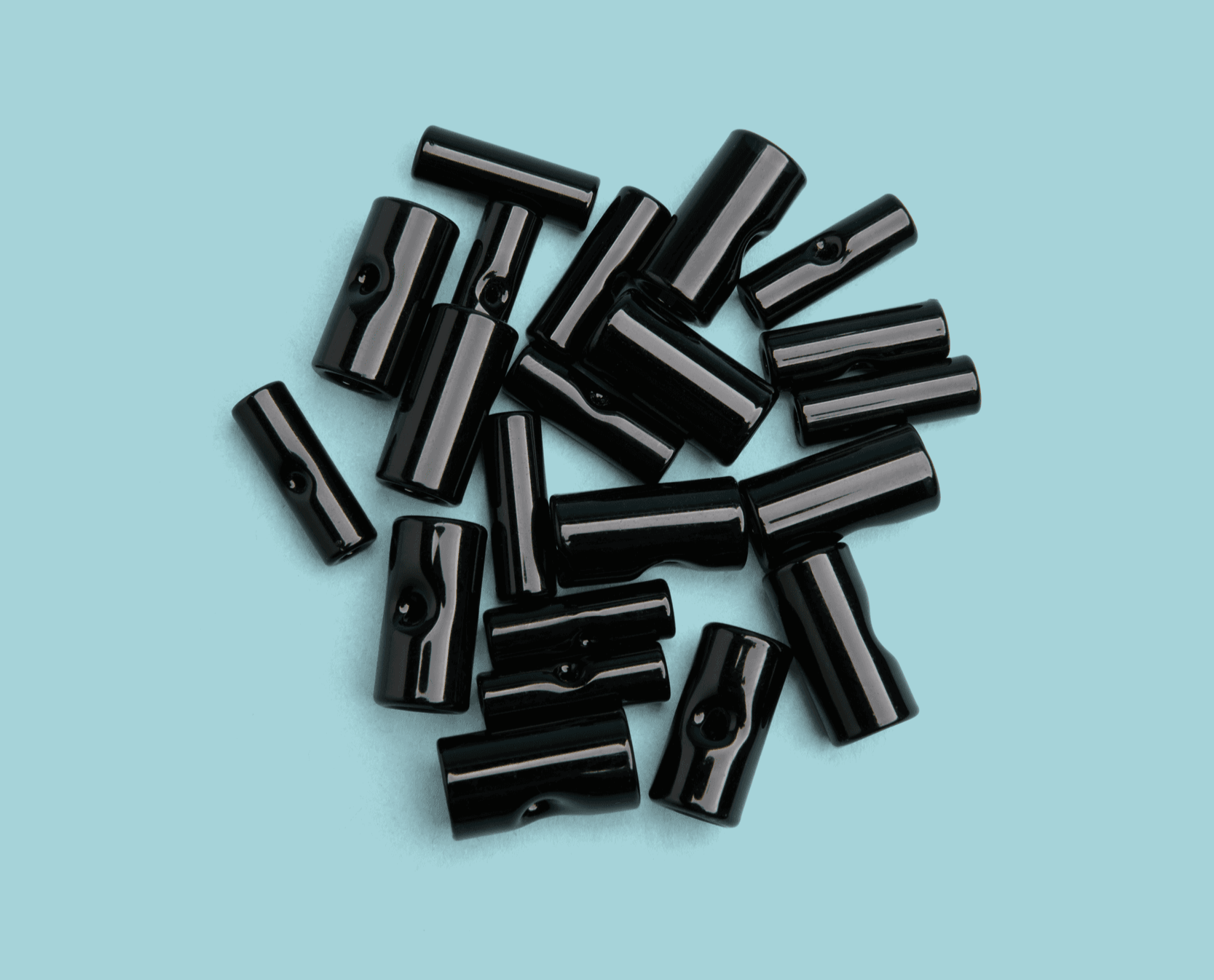
Pricing on these options vary widely. A basic cardboard crutch is $.02, while a glass tip might be in excess of $.17 each. Your brand values, budget, and target audience should inform the type of material you use.
Using a crutch or tip is also a great place to add some branding to your joint. Generally, cannabis products are branded only on the packaging; the literal product you consume doesn’t usually have any branding on it. Pre-rolls are the exception. If you’re rolling with the BlackBird, RollPros can help you design a custom-branded crutch/tip for your pre-roll. When your customer passes their joint around the circle, you can leave an impression on every person hitting it by including a branded detail on the crutch or tip.
Package Your Pre-Roll
- Are they male or female? This should influence color, font, and word choice.
- Are they using your pre-roll for medicinal or recreational purposes? This should influence how much and what type of info you include on the packaging.
- Are they finding you based on a collab with a local artist or a concentrate brand? Be sure to make it clear on the packaging who you’ve partnered with—you want this to catch their eye.
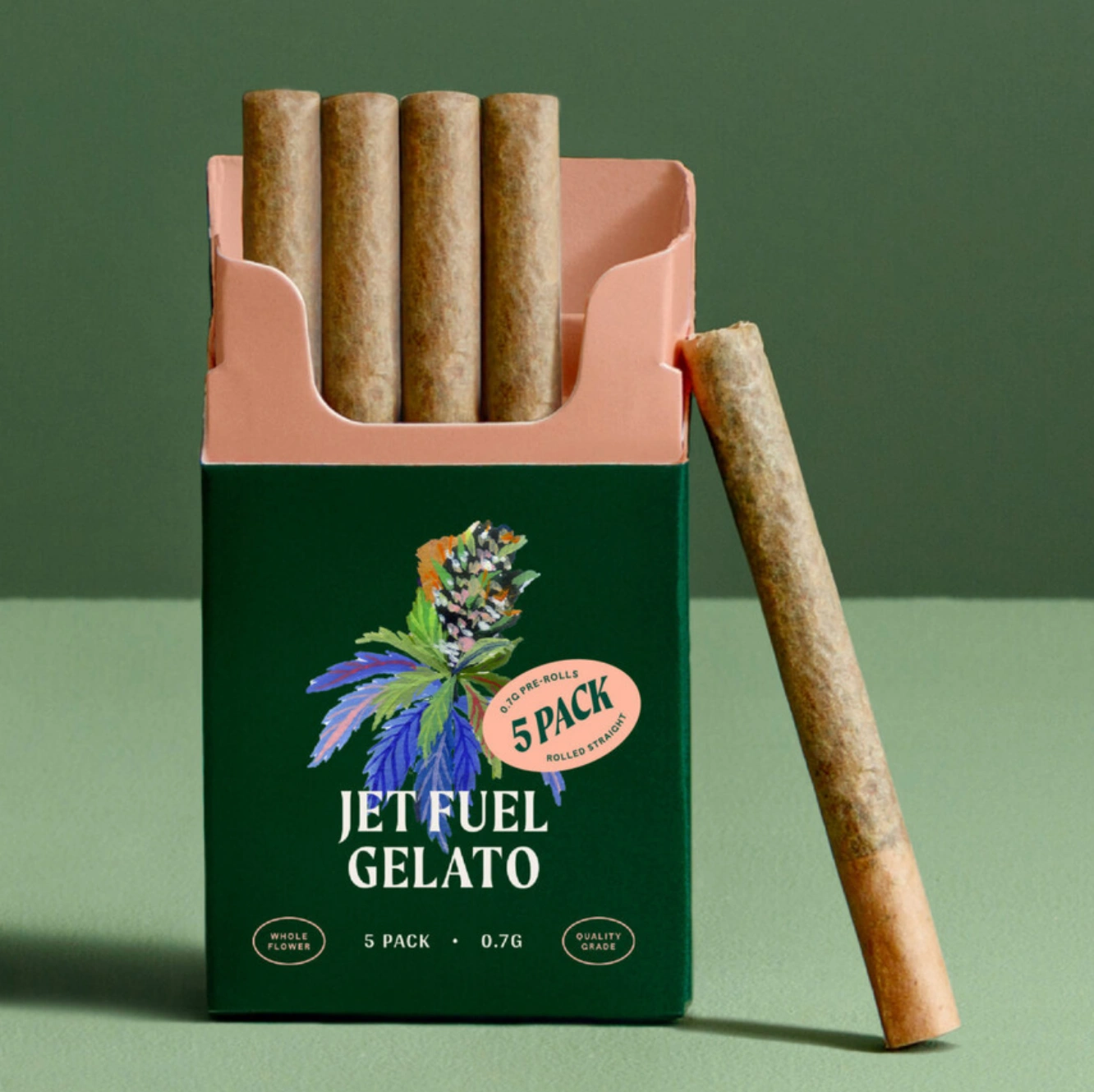

You want your product to jump off the shelf, so spend some time actually browsing the shelves at local retailers. Look at the competitor products. What can you do to make yours stand out? Bright colors? Different style of packaging? Or if everyone else is going loud and over-the-top, maybe a more subtle and subdued look would set you apart.
One other point of packaging to consider is if you’re selling your pre-rolls as singles or as multipacks. Multipacks are hot sellers these days. If you’re looking to earn new customers, a multipack could be ideal packaging because it allows you to introduce potential new customers to more than one of your flower strains at a time.
Multipacks also allow you to play with your infusions if you’re going infused. Each pre-roll in the multipack can be a different combination of flower and concentrate. Slap a QR code on the packaging or follow up with your consumer via SMS or email to ask them to vote on or rank their favorite infusion in the pack, and use this insight to inform future pre-roll releases.
Custom Joints Create Custom Experiences
- In line with your target audience’s wants, needs, and goals
- A clear representation of your brand
- Repeatable
Rolling with the BlackBird guarantees consistency, both in the process of creating the pre-roll and in the actual end product your customer experiences. Learn more about the BlackBird here.
Next up in the series, we’ll go over the different marketing materials and collateral you can use to increase awareness around your pre-roll(s). Stay tuned!
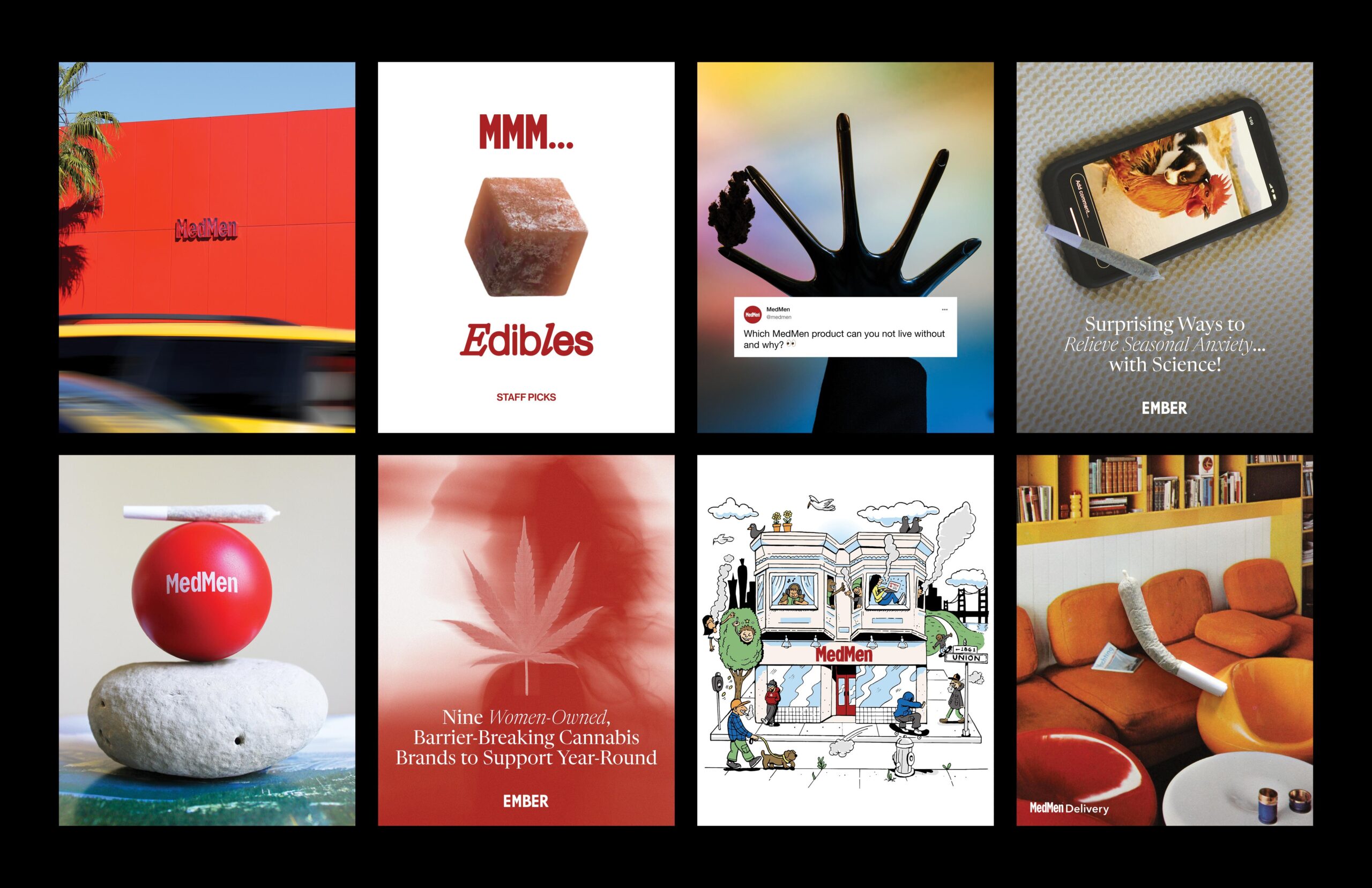
Marketing Materials
While most brands and businesses will focus on consumer marketing, you actually have two other “audiences” other than consumers. Buyers (retailer decision makers), and budtenders. You need to be able to communicate your message to all three audiences, and create marketing collateral specific to each audience.
Retailers have it tough these days. If you can demonstrate to them that you’re going to be supporting your products with a good marketing effort, they’ll be more likely to give you shelf space or at least a test order.
And budtenders, well, they’re maybe your most important audience. So important, in fact, that we dedicated an entire section to budtender marketing, which you’ll see further along in the guide.
Remember: you can’t truly determine if a product is a dud or a success until you’ve put it in front of enough people. Don’t tap out from a simple lack of product awareness. On day one, your goal should be impressions, new retailers, and units moved, not necessarily raking in dough.
Display Materials
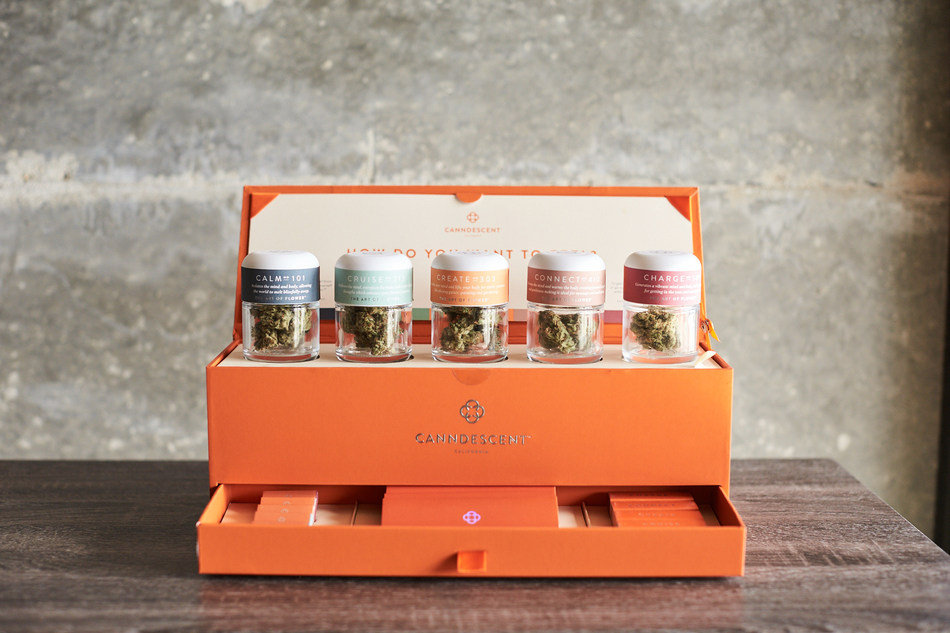
Display Boxes
For example, if you chose hemp paper for your pre-roll, your display box could have a catchy blurb about why it’s the most natural or eco-friendly choice. Meanwhile, your pre-roll packaging could just say “hemp paper pre-roll.” Further explanation isn’t needed because your display box offered the information.
If you still want to add further information to the packaging, you can always include a QR code. We’ll go over those in a few.
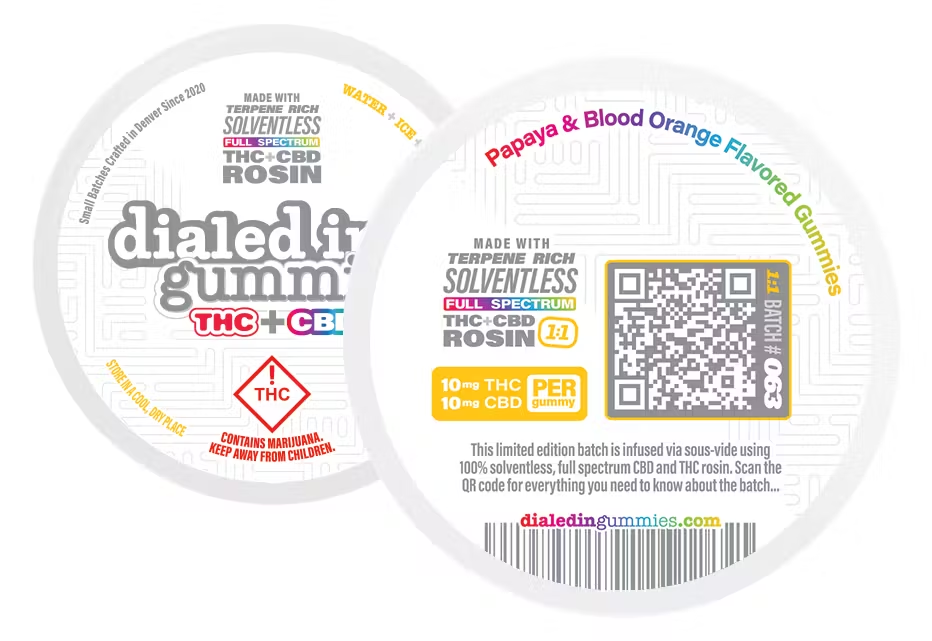
QR Codes
The other great benefit to using QR codes to prompt your audiences to learn more is that they are trackable. You can use a tool like Bitly, place different QR codes on different flyers, posters, your packaging, and anywhere else, and see what gets traction.
Other than learning more about your brand, consider QR codes sending your fans to:
- A landing page for them to sign up for your brand/product’s loyalty program. Don’t have one? There’s another brand and loyalty-building opportunity for you!
- More details about the specific product’s effects, including strain and concentrate information, terpene details, etc. This could also include a link to the product’s COA.
A landing page that explains why your pre-roll is the best option i.e. it’s rolled instead of stuffed, it features sustainable packaging/materials, a portion of its sales go to a good cause, etc. ← We always encourage our customers to create a page like this around their pre-roll(s). Many customers don’t know the advantages of a rolled pre-roll versus a stuffed one. It’s important they understand the differences and benefits a rolled pre-roll offers.
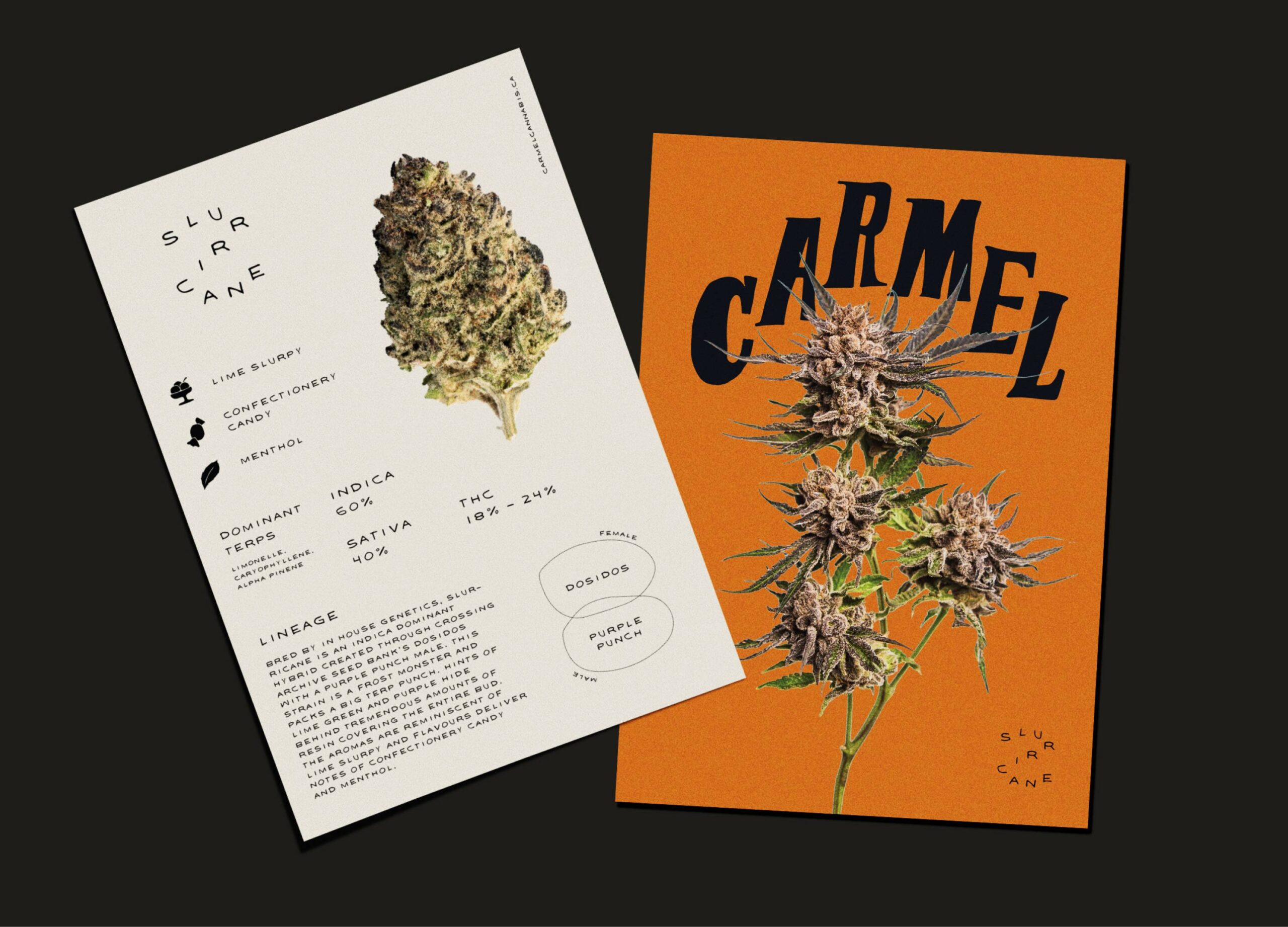
Cards and Flyers
- In-store purchases. If they’ll allow it, ask the dispensaries that sell your pre-roll(s) to drop a little info card into each customer’s bag that purchases your product. If not, see if they’ll allow you to place the cards next to the product’s display.
- Pop-up events. Pop-up events are an ideal place to share info cards/flyers on your products. For your pre-rolls, consider passing the info card out with a freebie like a roach clip or reusable doob tube. You see these everywhere because they work, and are a great way to get some initial traction with your product. You don’t need to stand up your own street team; consider using a 3rd party like our friends at The Free Agency.
- Collabs. Remember the collab ideas we mentioned in part one? The artists/brands you collaborate with can help spread the news about your new product, but they’re going to need info about you to share with their loyal customers. Their audience might not know your brand or products at this point. An info card/flyer is a great way to direct them on how to find more of what you have to offer.
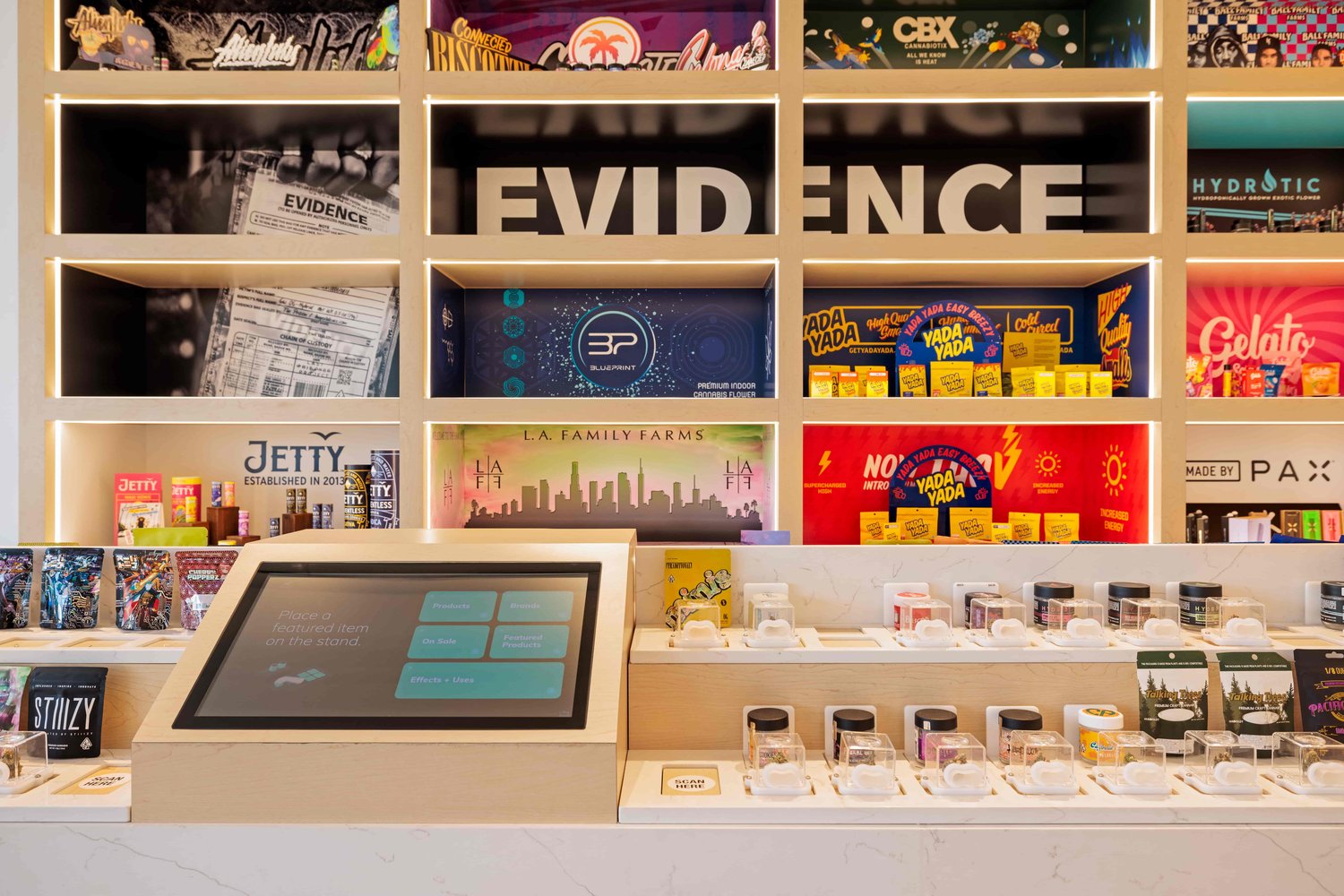
In-Store Signage
Common in-store signage options:
- Floor, wall, or window decals. Because many retailers are required to have windows blacked out or tinted, window decals can often be an excellent and very visible option. Keep in mind that retailers will likely charge you for these placements.
- Posters. From small to large there will often be options for posters throughout the retail space, especially the waiting room (if they have one.)
- Table tents. Just like you’d see on a table at Chili’s promoting their Grande Margarita.
- Shelf talkers. Hanging or standing objects that are applied directly to the shelf where your products are found.
- Custom displays. For the right retailer, a custom display will go a long way. They can be expensive, but if a top-tier store is going to give you a corner, take advantage of it and come up with something unique and creative.
Digital Marketing Collateral and Assets
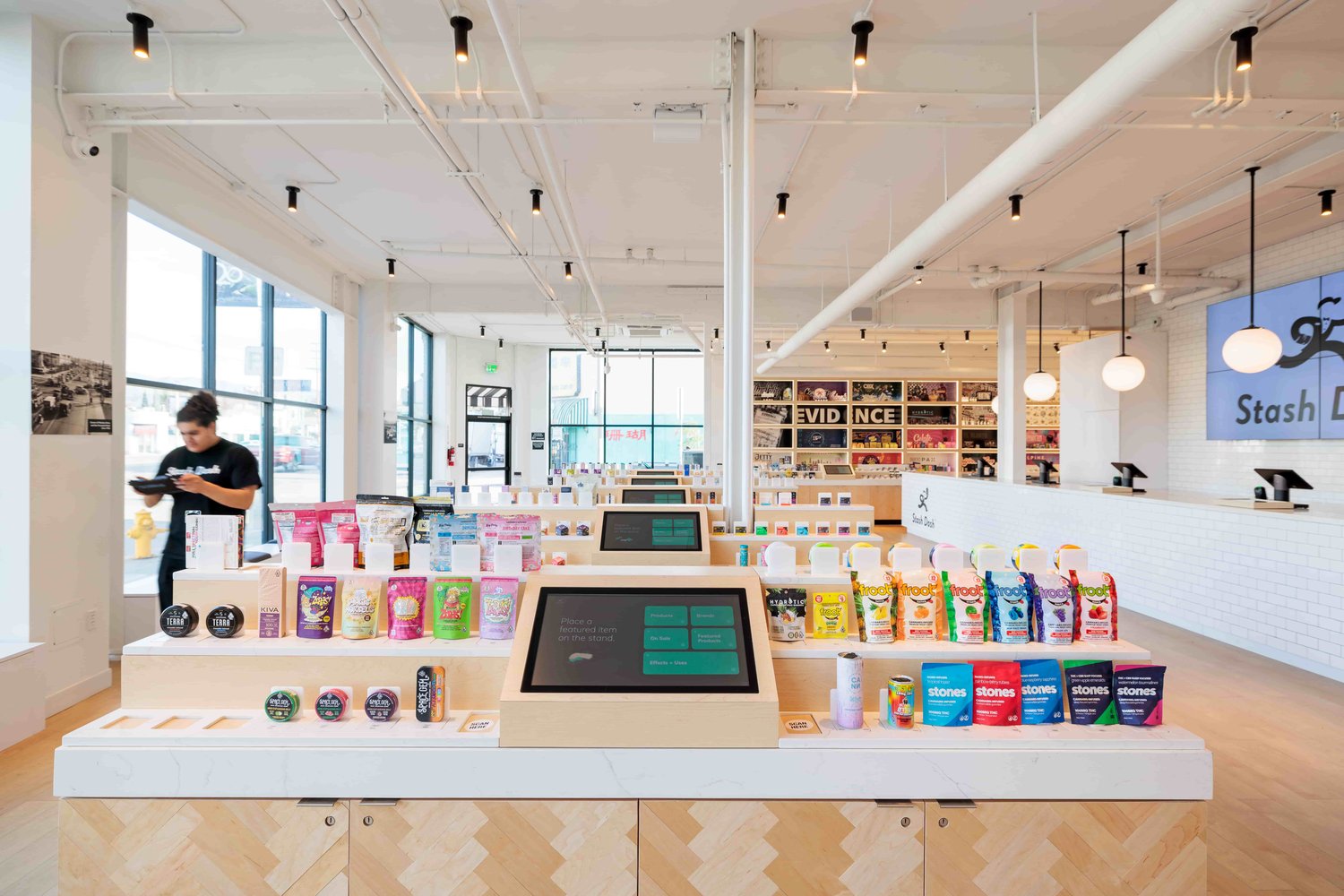
Digital Display Assets
This can be an effective outlet for brands that might not prioritize pre-rolls but are recognizable for other types of products. Use this space to feature something your customers will immediately recognize, like your logo or an influencer you may use to promote your brand. You want your loyal customers to see it, know it’s you, and walk over to your display because it’s you. The same concept applies if your brand is all pre-rolls and you’ve built a loyal following.
If you’re a newer brand and not super recognizable yet, use this space to catch the eye of customers walking in. A logo is one option, but if you have the space and capability, consider trying something that’ll stand out in a room full of TV screens with logos on them, like a catchy call to action, a video loop, or a short commercial.
Bonus: You can repurpose videos you create for your website and social channels too!
Consistent Messaging Hits Hardest
Your messaging should be clear, concise, and consistent whether it’s a blurb on an informational flyer or a caption on a social media post. Your marketing efforts should also be consistent, meaning you should continue to push and market your pre-roll well after its launch.
Don’t stop at one email campaign or social media contest. Don’t stop after one pop-up event or collaboration. And don’t stop getting to know your budtenders at your retailers. If they like you and your product, they can push your pre-roll farther than any marketing campaign.
Budtenders: Your Lynchpin to Success
They’re your frontline. They’re in the trenches. They stand between your pre-roll and a potential new customer (in many cases, literally), and they can almost always dictate whether or not that customer will purchase that pre-roll. (Seriously, check the stat in the next section. 👀)
Budtenders are such a valuable part of your sales strategy that they should be treated as another target audience alongside your consumers and retailers. Ask them what they like about the products they recommend. Get curious about the things they don’t like about the products they won’t recommend. Get to know your budtenders.
Because they’re the ones convincing customers to buy, their thoughts and opinions should hold just as much weight as your consumers’.
Make friends with the budtenders who work at the dispensaries selling your products. The more they know about your product, the easier it will be for them to sell it. The more they know about you, the more likely they’ll support your efforts.
The Role of the Budtender
The survey supports this theory, revealing that nearly 73% of the time, customers follow their budtender’s recommendations.
You need to make sure your pre-roll is one of those recommendations.

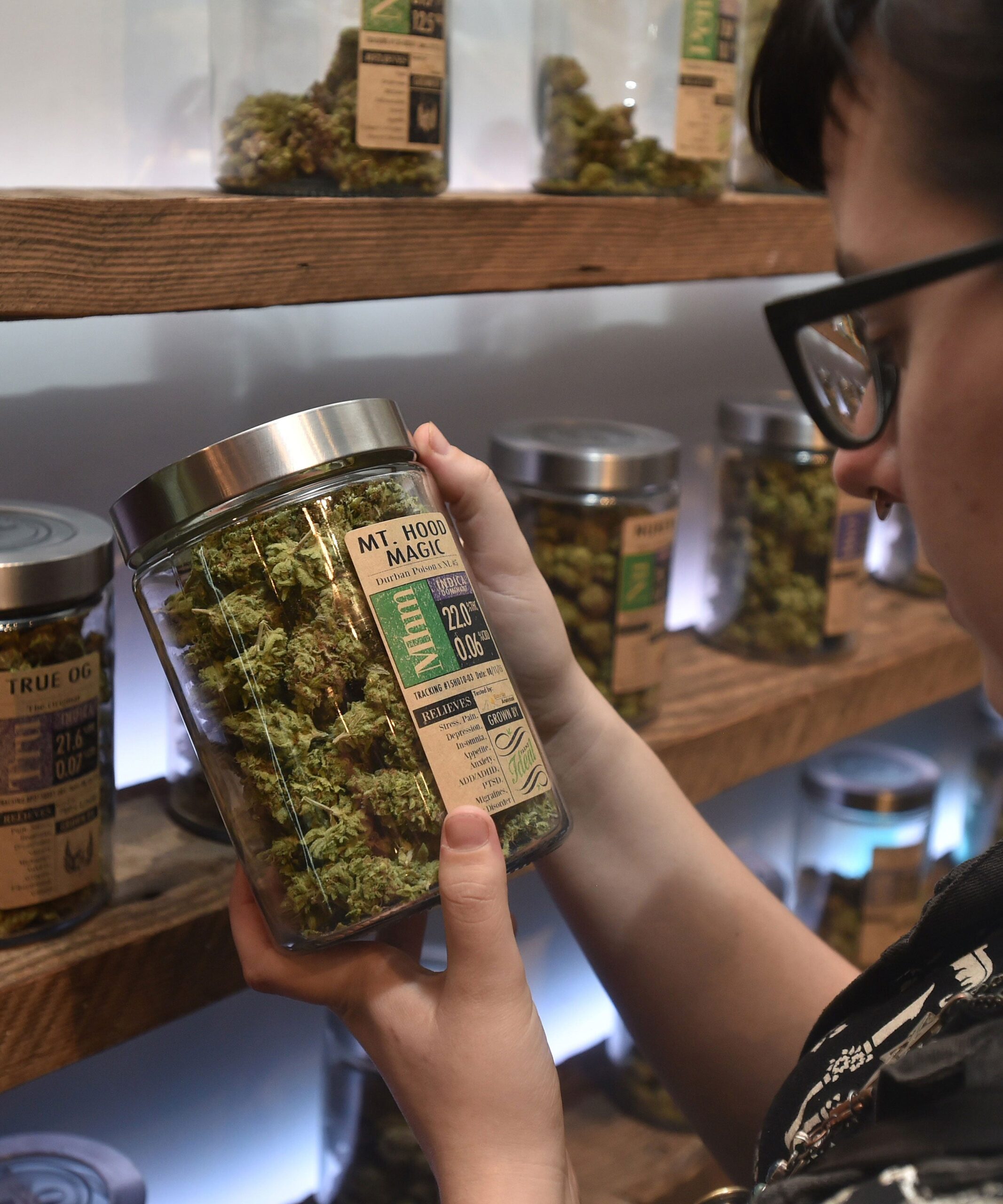
How To Earn a Budtender’s Recommendation
Share Product Samples
Brightfield Group’s Canadian Budtender Study from Q4 of 2021 found similar results, noting that budtenders are more likely to recommend a brand after trying samples from that brand.
Share product samples with your budtenders.
Consider throwing in some free merch as an extra incentive, like t-shirts, hoodies, hats, etc. Brightfield Group’s 2023 survey of budtenders showed that free merch/swag impacts 52% of budtenders and the brand recommendations they make.
After you share your pre-roll with your dispensaries’ budtenders, be sure to follow up with them and ask for their feedback. Their thoughts on your product can help to inform future marketing campaigns and potential changes that may need to be made to your next batch of pre-rolls.
Educate About Your Brand/Product
Online Product Education Courses
Instead, in your product education course, discuss details around things like:
- How your grow process may differ from others—You don’t need to explain the grow cycle to a cannabis expert, but if you use something special, like an indoor environment with full-sun exposure, it’s worth mentioning.
- How your concentrates are produced (if applicable)—Again, your budtender will generally know how concentrates are made, but if you have a unique element to your process, be sure to point it out.
- Why you chose the flower/flower + concentrate combo for your pre-roll—Use this part as an opportunity to define your target audience to your budtenders. Instead of saying “We chose Gelato for its relaxing effects,” try something like “Customers looking for a post-workout pre-roll to help them relax and reduce discomfort will love this joint.” Tell the budtenders whom they should be recommending your pre-roll to.
- The construction of your pre-roll—This is basically the details of everything we went over in [part one]. Budtenders won’t need a ton of info here, but if you’re rolling your pre-rolls with the BlackBird, you’ll definitely want to mention it as it’s a valuable and positive differentiator.
- What causes your brand supports—If there are any charities or causes your brand supports, be sure to let your budtenders know. This can encourage them to prioritize recommending your pre-roll over others.
Budtenders have a lot of product education courses provided to them, so to ensure yours is fully reviewed and absorbed, offer an incentive. Many brands will provide gift cards, free merch/swag, cash, concert tickets, etc. to budtenders in exchange for their time and attention on their product course.
In-Person Events
You can also invite budtenders into your facility to show them exactly how your pre-roll is made. Having them as guests in your “home” demonstrates the value you place on your relationship with them and educates them on your product.
In-person events can be more engaging than an online course and can allow you to forge friendships with budtenders early on in your retail agreement.
Regularly Engage With Budtenders
You and/or your brand reps need to be physically in the dispensaries that sell your pre-roll having regular face-to-face interactions with the budtenders. Get to know them and let them get to know you. Nearly 50% of The Great Budtender Survey respondents said they have occasional or rare interactions with brand reps—leverage that. Be the brand rep who’s asking questions, sharing knowledge, cracking jokes, and becoming a regular.
It’s simple—friends support friends. Be friends with your budtenders.
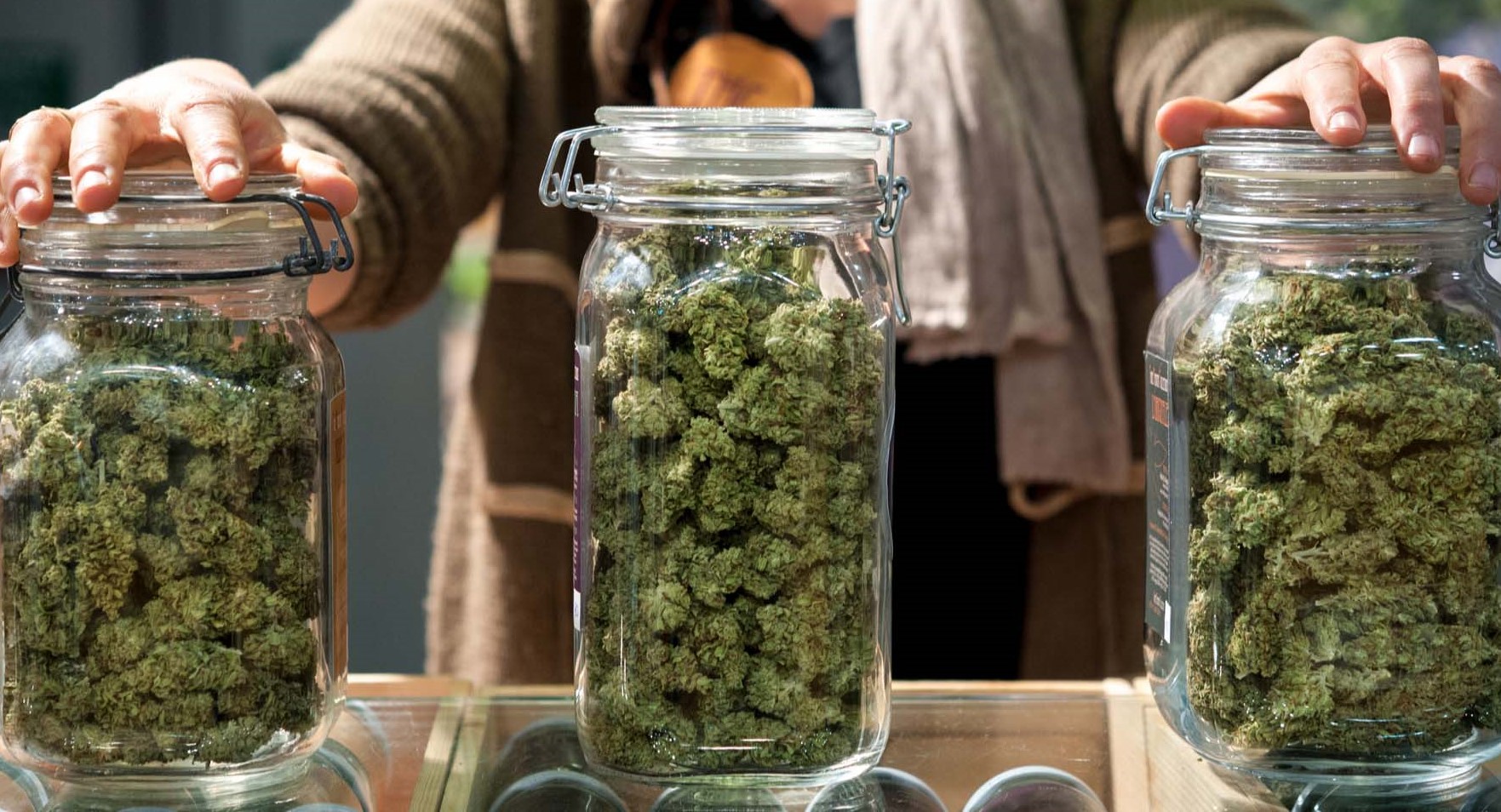
Learn From Budtenders
For most cannabis brands, there’s not much opportunity to get face-time with customers outside of pop-up events. You may have some direct conversations via social media or email, but for the most part, you don’t really have the opportunity to interact directly with your customers. Budtenders do.
Nearly 60% of budtenders who participated in The Great Budtender Survey said they always ask customers for feedback on products that were recommended to them in a previous visit. This is gold for you.
Asking your budtenders for this info can help you determine:
- Future marketing campaigns for your pre-roll. If customers keep coming back saying they love the flavor of the pre-roll, capitalize on that!
- Updated language for your current marketing collateral. Using the same example mentioned in the previous bullet, you could simply update your current marketing materials with details about the product’s flavor if you’re not in a position to roll out a new marketing campaign.
- Adjustments to your pre-roll. If consumers are telling budtenders they love the effects of your pre-roll but not the quality of the burn, it might be time to explore creating rolled pre-rolls instead of using stuffed cones.
- New product ideas. If your customers love your pre-roll but keep saying things like “Man, I wish there were a pre-roll like this that gave me an energy boost,” that’s your queue to release another pre-roll with a different strain.
Budtenders Are Your Buds
Cannabis is a competitive landscape, and it’s only going to get fiercer once the plant is moved to Schedule III. To succeed in this industry, you need a loyal brand following. That starts with a custom-designed joint experience and progresses with intentional marketing campaigns and techniques. But, at the end of the day, it lands pretty squarely on a budtender’s shoulders.
You can earn consumer loyalty without a bunch of marketing campaigns simply by being the go-to brand budtenders recommend to customers. To be that go-to brand will require a lot of face-time with budtenders. Make sure the brand reps you work with understand their role—they need to be in the dispensaries making buds with the budtenders.
However, no amount of face-time can make up for a lousy product. Brightfield Group’s 2023 survey found that nearly 50% of budtenders are unlikely to give a brand a second chance if they don’t like its products after one try.
Basically, you’ve got one shot to impress budtenders with your pre-roll. If you don’t want to risk it, get in touch with RollPros now. We can show you a product demo of the BlackBird so you can see just how superior its output is compared to stuffed cones. With the number of stuffed cones on the market, one hit off an evenly burning pre-roll will be a memorable experience for any budtender.

Executive Summary
Understanding your target consumer is key. Whether you’re catering to eco-conscious buyers who prioritize sustainability, luxury seekers who want the best of the best, or casual users looking for a reliable smoke, our guide helps you dive deep into their needs and preferences. Craft pre-rolls that speak directly to the people who will love them most.
From choosing between rolled joints or cones to the font on your packaging, every decision you make should be intentional and aligned with your brand’s goals. We provide insights into each of these critical choices, all aimed at helping you create both a product and experience that keeps customers coming back.
However, even the best product needs the right push to succeed. That’s where our marketing strategies come into play. We guide you on how to make your pre-rolls impossible to ignore, whether it’s through eye-catching display materials, engaging packaging, or ensuring that budtenders—those all-important gatekeepers—are not just familiar with your product but excited to recommend it.
Think of this guide as your blueprint for navigating the complex pre-roll market. It’s packed with real-world strategies to ensure that your pre-rolls don’t just sit on shelves—they fly off them. Whether you’re new to the game or looking to up your marketing strategy, we want to help.
Grab a printable copy of this report by filling out the form below:



